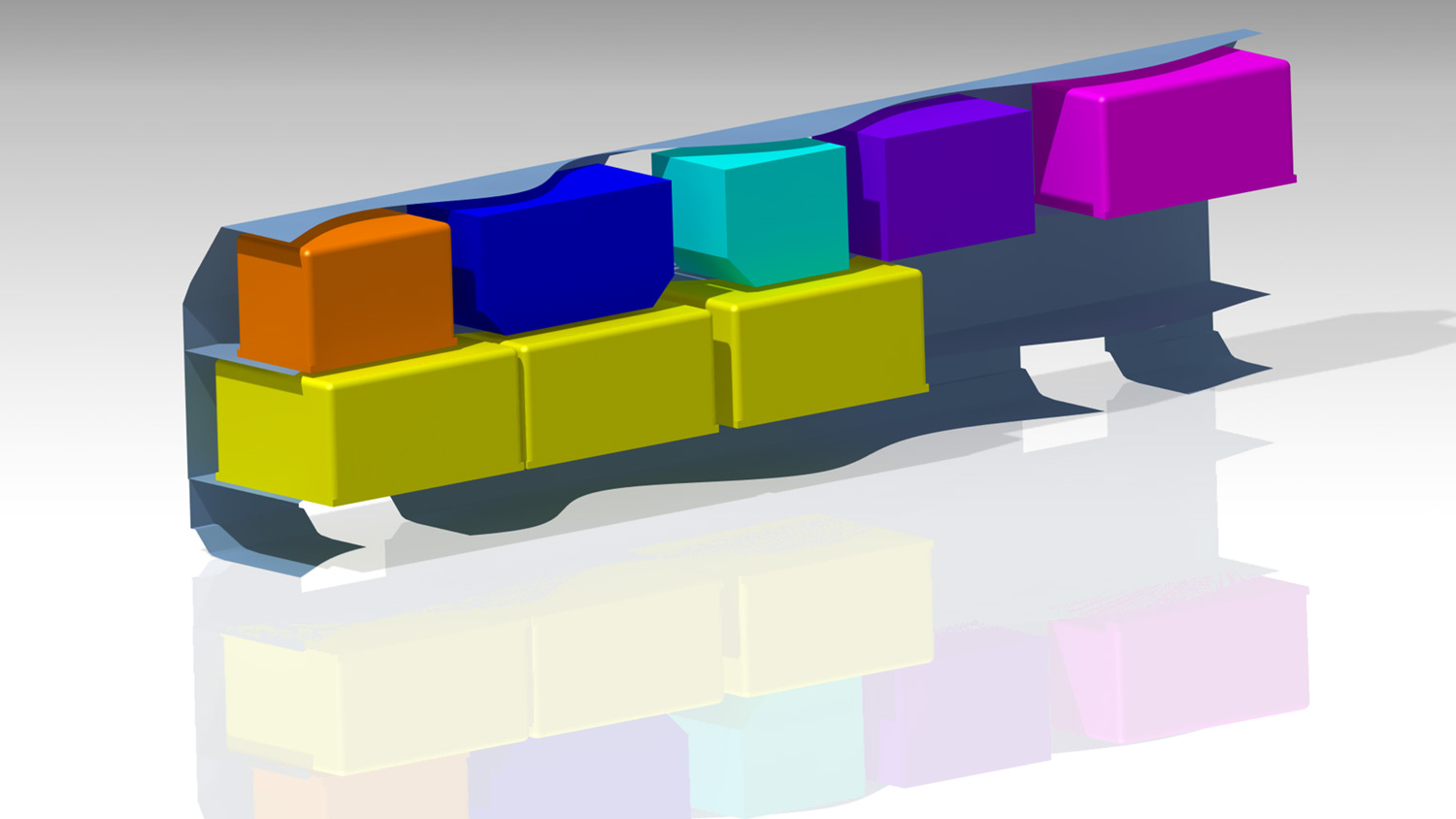High-speed freight train
The DLR is researching pioneering train concepts. The major objectives here are shortening journey and transport times whilst achieving low specific energy usage, noise reduction, an increase in comfort, an improvement in travel safety and reduction in wear and tear as well as life-cycle costs. With this in mind, an operating concept for the trains of the Next Generation Train (NGT) family has been developed. The high-speed train (NGT HST) operates with timetable speeds of up to 400 km/h on high-speed mainlines supplemented by an InterCity train with speeds of up to 230 km/h (NGT LINK) conveying passengers from the surrounding region to the hub stations on the HST high-speed line. Complementary to this, a freight train (NGT CARGO) with accompanying logistics concept is currently being developed and integrated into the operating concept of the passenger trains.
The NGT CARGO trains will be composed of individual CARGO wagons and high-performance locomotives, as required. The individual CARGO wagons each have a built-in engine with lower performance as well as an energy reservoir on board. This means that they are able, autonomously and independently, to serve sidings individually or as groups of individual CARGO wagons. Coupling and uncoupling of the trains takes place autonomously without the use of shunting locomotives or personnel. The individual CARGO wagons and locomotives are coupled together by automatic couplings which not only transmit locomotive power but also energy and signals.
For operations on high-speed track, a group of individual CARGO wagons is combined with one to two locomotives to form a complete CARGO train. The locomotives supply the additional traction power required for high-speed operation. The number of individual CARGO wagons and locomotives can be varied according to customer requirements and with an adjustment of the maximum speed, whereby the NGT CARGO in its fastest configuration can be combined to operate with the NGT HST.

Several NGT CARGO trains can be coupled together virtually via a remote coupling system, increasing operational flexibility. It is also possible to couple them together with the other trains of the NGT family (NGT HST and NGT LINK). This makes dynamic coupling possible. This means that the trains can be coupled and uncoupled remotely during the journey. This bundling of passenger and freight transport makes it possible to make maximum use of available track capacities.
NGT CARGO combines flexible distribution of individual wagons to their final destination with low personnel implications and short transport times. A range of load handlers will load and unload the wagons automatically at open sidings and in centralised logistics centres. This system will transport even low volumes of high value or urgent goods as required and at reasonable cost.
The NGT CARGO concept shows how freight transport of the future could look. NGT CARGO is at the core of a comprehensive logistics concept using the railway network as the central means of transport. A flexible and environmentally sound means of transporting freight, which is competitive in the intermodal field, is being developed in the NGT CARGO freight train.
